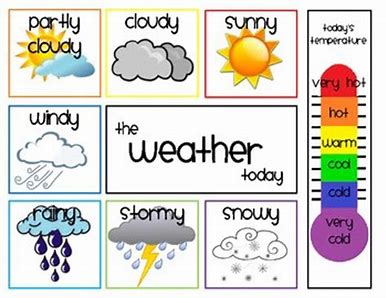#Temperature Changes & #Autism
The weather is changing and you may find that the attitude of your favorite person with autism is changing too. Hypo or hyper sensitivity to temperature can affect those on the spectrum. A writer for the Spirit of Autism says, “My son’s refusal to wear a coat in winter I thought was either driven by stubbornness or laziness. But many people with ASD may feel ‘hot’ all the time, even when it’s ‘cold’. Or, they can feel ‘cold’ all the time, even when it’s ‘hot’ weather.”
If their nervous system is on ‘high alert’, they may suffer from poor or underdeveloped circulation. Their hands and feet are always cold because their blood leaves their extremities to deliver oxygen to the internal organs and muscles. Unfortunately, the body is unable to regulate and may become overheated or always have cold hands and feet due to thermoregulation issues.
Davide-Rivera (2015) writes that 'temperature regulation' issues can put a person in a state of constant discomfort. This can lead to sensory overload, shutdowns, and even meltdowns. The body’s core temperature is regulated by neural feedback mechanisms in the brain, which operate through the hypothalamus. A very neutral temperature may be insisted upon by the ASD person’s bath, their food, and even for the room they’re in. Even when taking even moderately hot showers, those who are temperature sensitive may report feeling dizzy, light-headed, or seeing spots. And then when cooling down, they may feel the cold much faster than you would expect.
< My Thoughts > “…mechanisms in the brain…”
Sometimes when the endocrine system is ‘out of whack’, it’s easy to feel these same kinds of sensations. This may be hard to diagnose without very thorough and expensive tests, which #clinicians and insurance companies tend to want to avoid. Just saying.
Davide-Rivera (2013) – One of the first things I learned about my #Asperger’s #diagnosis was that there were three core deficits that accompany this condition – the lack of theory of mind, executive dysfunction, and weak central coherence. There were also a host of other issues like #sensory processing difficulties – being #hyper or #hypo sensitive to outside stimuli like to heat, cold, or pain.
< My Thoughts > “…a host of other issues…”
#Parents may take years to find out that their ‘wild child’ has really painful sensory issues. Often, children really don’t want to give you a bad time… they’re just having a bad time.
van Someren (2016) – Clinicians use the ETSRS questionnaire to narrow down temperature regulation issues. Questions cover differentiating experiences of the individual’s body ‘heating-up’ and ‘cooling-down’, unexpectedly. Some persons with sensory issues only complain about problems with their extremities, and only under certain conditions. Determining whether this happens to them during the daytime or the nighttime. Whether the person is in an upright or supine position, awake or asleep. If they are inside or outside, in summer or in winter; and so on is helpful. These questions are designed to determine which parts of the body seem to be affected. Answering a variety of these types of questions further narrows down the specific #regulation issue.
REFERENCES
Davide-Rivera, J. (2013). Twirling Naked in the Streets & No One Noticed: Growing Up with Autism; eBook Edition.
Davide-Rivera, J. (2015). Why Does My Child Refuse to Wear a Coat?; Autism Answers, Traits/Behaviors; Retrieved online from – http://aspiewriter.com/2015/07/temperature-regulation-why-does-my-autistic-child-refuse-to-wear-a-coat.html
van Someren, E., Dekker, K., et al.(2016). Experienced Temperature Sensitivity & Regulation Survey (ETSRS); Journal of Sleep Research; V25, p125.

 RSS Feed
RSS Feed